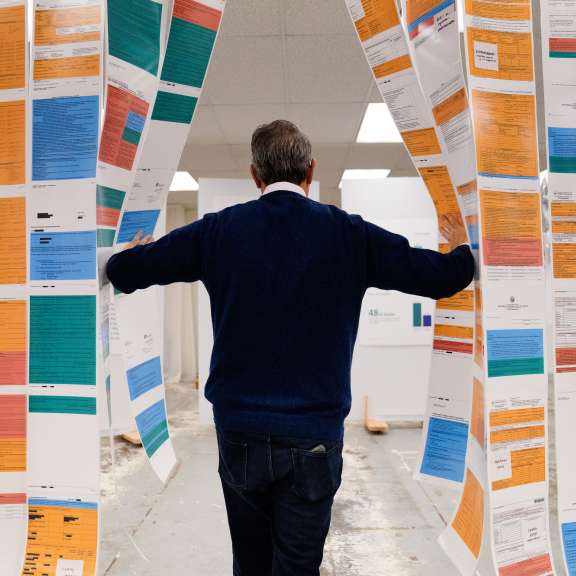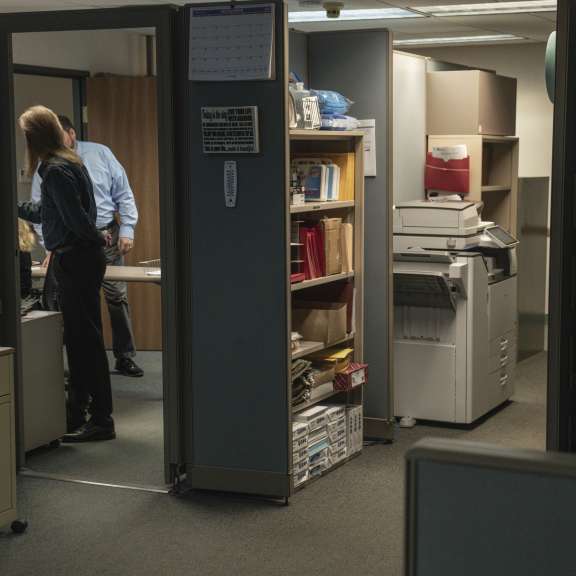Designing for trust
How taking creative risks can improve the relationship between institutions and the public

The relationship between institutions and the public can be a complicated one. Ask any leader in public service; they’re there for a reason: to make life easier for the people they serve. For the public though, frustrating past experiences, red tape, and preconceived notions about bureaucracy tend to shape the narrative into one filled with distrust, frustration, and even hopelessness.
What if we rewrote that ending?
For a recent project with the Michigan Department of State, our team explored ways to build trust in institutions through design. To do so, we started with something that impacts millions of Michanders each year: their driver’s license and ID card.
Having an ID card can impact a person’s ability to work, access public benefits, and even fly on a plane. Applying for a driver’s license is often a formative experience for young people in dealing with government. Because of their reach and impact, touchpoints like these can set a tone that has an impact for years to come.
This is why, in partnership with leaders in Michigan, we set out to make license renewals feel more respectful and intuitive. Through research and thoughtful design, this is the story of how we streamlined the renewal process—and created a more positive impression for Michiganders interfacing with state government.
unpacking the envelope
We kicked the project off with research. If we wanted to design a better experience, we needed to understand what was broken in the first place.
Through conversations with residents and frontline staff, we learned that most Michaganders dreaded the renewal process. It began with a notice mailed to residents when they were up for renewal. Each mailing contained up to 16 pieces of paper, including renewal forms and various other materials on state parks, organ donorship, voter registration, and more.

While the information provided was well-intentioned, residents told us they struggled with the mailing for several reasons. It was hard to distinguish the envelope from junk mail, so it often ended up in the trash. When it did get opened, generic instructions and unclear requirements made it difficult for residents to figure out what was needed for their situation. Over half of residents were eligible to renew online or by mail, but because the process felt unclear, they’d put it off until suddenly the MDOS office felt like the only option.
Oftentimes, this happened on the renewal deadline—which fell on their birthday.
an unhappy birthday
Long lines and wait times were the norm at local MDOS offices. Frontline staff became responsible for managing frustrated residents’ emotions—guiding them through the process, where the forms had failed to do so.

Frequently tasked with de-escalating conflicts, staff were exhausted and burned out. Missing documents and incorrect payment amounts required them to spend hours communicating the same information to residents, instead of efficiently processing paperwork. Over half of residents had to come back a second or third time to complete the process successfully. These added office visits put a further administrative burden on staff.
In teaming up with state leadership, we set out to redesign the renewal form to streamline the experience for residents and staff. By giving residents clear instructions and a straightforward path to renew, we could help them avoid unnecessary trips to the MDOS office and ease the burden on staff at the same time.
the power of design principles
We’d heard from research that the forms would get lost in junk mail, that information was unclear and overwhelming, and that folks didn’t know what steps to take next.
With these challenges in mind, our team defined three core design principles for the new form we’d create—urgent, personalized, and action-oriented. Urgency, through bold design and small nudges throughout, would help folks notice the form and get ahead of the deadline. Personalized guidance would help them know exactly what was needed for their specific situation. And focusing on a single call-to-action would help build momentum around a clear path forward.
We create core design principles for every project we work on. Not only do they help shape our work, they also help make the case for certain decisions, sometimes even unconventional ones, by connecting creative choices back to user needs.
For instance, at the onset of the project, personalization felt out of reach for our partners in the state. In working together, we were able to find a way to customize the form’s content based on a dozen different situations someone might be in (like needing to renew their license in person to update their picture), in a way that the state’s technology and data systems could enable.
creative risks rooted in human needs
Anchored in our design principles, the team created 25 different prototypes and iteratively tested them with residents and staff across the state. The outcome was a series of forms (one for each renewal use case), each sharing design elements rooted in our three principles.

To give urgency to the form, we created a new, oversized envelope designed to catch people’s attention. We worked closely with the Department of Technology, Management, and Budget (who handles printing for the state) to understand the constraints and help them to see what was possible. We assessed costs, sourced new product materials, and worked to adjust the state’s printing machines to handle the new forms.
To make the experience more personalized and action-oriented, we paired down information to focus on what matters most. The old mailings included over a dozen different pamphlets and notices. Today, it’s a single piece of paper that’s highly personalized to an individual’s needs. On the form itself, icon-heavy renewal options, organized by length of time, encourage residents to complete their renewal remotely whenever possible.
We also added in small moments of delight to set a positive tone around the experience from the get go. A thoughtful message—‘Let us be the first to say, Happy Birthday”—greets residents when they open the envelope. The top of the form doubles as a helpful reminder slip that residents can stick directly on their fridge.
Reshaping the narrative
Oftentimes, when we work in or with institutions, there’s an underlying belief that the projects we put forth need to follow a traditional path or blueprint.
This project encouraged us to challenge those assumptions and experiment with what might be possible with something as seemingly mundane as a driver's license renewal form. In it, we found space to be creative, push some boundaries, and design an experience that brings ease and delight to people.
We’ve also started to reshape the narrative between the state and its residents. In being more respectful and intuitive, the new forms show folks we see them as real people—not just “users”. They leave residents feeling hopeful, instead of frustrated. And they build understanding and trust going forward.
When institutions embrace thoughtful design, it can set the tone for positive interactions between government and people for years to come.


